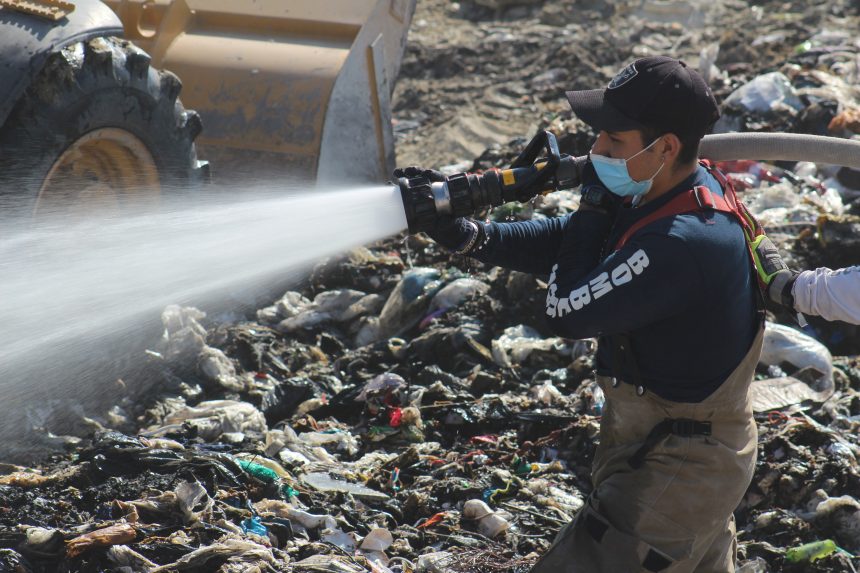The garbage landfill in Palo Colorado caught fire for the second time on Dec 12. At the close of this edition, the fire had consumed several hectares of garbage. There are various theories about how the fire started: one is that a chemical reaction caused the combustion, although firefighters have pointed out that the temperature has not recently been high enough to start a fire; another is that it was caused by government dissidents; others claim that the government may have started it. According to firefighters who were fighting the fire when Atención visited the area, the waste is not well compacted, so oxygen between the garbage layers favored the fire’s spread.
A cloud of smoke covered about three miles north of the landfill, the direction in which the wind was blowing. That day the cardboard houses of the pepenadores—people who separate, recycle, and sell garbage—were empty, no one was collecting waste and curiously, no dogs were present. The fire gave off an intense bittersweet smell mixed with dust and smoke.
The day the fire started only several water trucks, motor pumps, an ambulance with two rescue workers, and about two dozen firefighters from San Miguel and surrounding towns were on site to control and extinguish the fire. On the second day only 20 percent of the fire had been controlled with the additional help of backhoe loaders.
The municipal administration did not grant Atención an interview to detail damage to the environment, the cost to public finances, and most importantly, to assign responsibility for the event. Does the fault lie with the companies that have concessions for garbage collection and separation, or with the administration?
In a statement, the municipal government only said that the fire call was received by the 911 emergency system on Sat, Dec. 12 at noon, and that the agencies that worked to control it were: Civil Protection, the Red Cross, and firefighters from San José Iturbide, San Luis de la Paz, Dolores Hidalgo, Celaya, and San Miguel. Until that day the impacted area was two hectares.
The administration thanked the citizens who donated food and hydrating drinks to those fighting the fire, and stated that “the company in charge of the landfill would provide the required material for personnel working hard to put out the fire, including drinking water, food, and fuel for operation of the emergency units.” It recommended that residents of nearby communities not approach the scene, and wear facemasks as well as eye protection against smoke and stated that there was no fire risk to nearby areas.
TecMed and Winktek are responsible for garbage management
For each ton of garbage collected and transferred to the landfill TecMed receives 429.31 pesos from the municipality of San Miguel de Allende (plus VAT). Once the garbage is delivered, Winktek separates the waste through a process of mechanical belts, screens, and sorters. WinkTek receives 190 pesos plus VAT (from the public budget) per processed ton.
Annually, the cost of disposing of the waste is around 24-25 million pesos. Theoretically, 95 percent of waste is recycled, and the rest remains there.

